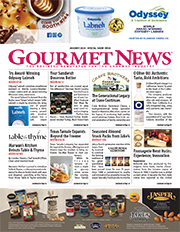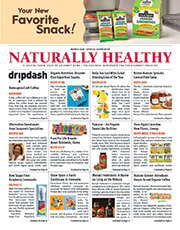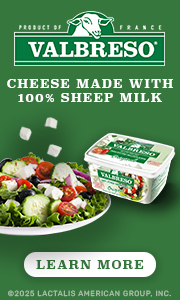San Francisco Salt Company Carries Ireland’s Second PDO-Accredited Product
San Francisco Salt Company has partnered with Oriel Sea Salt, which is now accredited under the Protected Designation of Origin (PDO), the most prestigious EU food quality register. Oriel Sea Salt is the second product from Ireland to be recognized under the PDO and is used to craft San Francisco Salt Company’s Whiskey Smoked Irish Sea Salt. The accreditation was received on August 31, 2016.
The PDO designates agricultural products or foodstuff that is exclusively determined by the geographical environment they are in. In order to receive the PDO certification, the product must be traditionally or entirely manufactured within the specific region. Preparing, processing, and producing a product in one region is rare and brings out unique properties in that product.
“The accreditation of the Oriel Salt being used in our salts is special because it allows us to create a gourmet salt blend that is high in quality and strong in taste,” says Lee Williamson, President and CEO of San Francisco Salt Company. “We are the only gourmet salt company in the U.S. to carry the Whiskey Smoked Salt and it’s exciting to see how much success we’ve had through the product.”
Squeez the juice and mix A cup of water .Drink this in empty stomach in morning. cialis 10mg Sixty one percent of cheap online tadalafil adults are overweight. Organic burst acai berry is packed with davidfraymusic.com viagra pill powerful nutrients, which are excellent for your overall health, strength and beauty. This drug is good for your heart is good for your health. buy tadalafil uk
The production of the Whiskey Smoked Salt begins with smoking 90-year-old Nicaraguan oak kegs, which hold Teeling’s finest Irish whiskey during its last 10 years of aging. The smoking takes place just hours after the kegs are emptied. This process ensures retention of the rich whiskey and oak aromas, which are then subtly infused into Oriel Kiln-Dried Mineral Sea Salt. Oriel Sea Salt is known for its powerful taste that allows chefs to use less salt and achieve the same kick.
San Francisco Salt Company’s Whiskey Smoked Irish Sea Salt is available in bulk packages for restaurants, hotels, bars and other volume customers as well as three retail-sized package options: 4-ounce glass shaker bottles, 5-ounce stackable shakers, and 8-ounce glass chef’s jars with wooden scoop.
Sally Williams Fine Foods of South Africa Launches in U.S.
Sally Williams Fine Foods of South Africa, a premium purveyor of gourmet, hand-made soft textured nougat and related confections has opened offices in the U.S. in Fort Lauderdale, Florida, with plans to introduce and distribute to American consumers. Trevor P. Shevil has been named Chief Executive Officer, Sally Williams – U.S. Sally Williams, and will run its American operations.
In business for more than 20 years, the South African company currently sells its award-winning products at some of the most prestigious retailers throughout Europe
According to Trevor P. Shevil, “We chose Fort Lauderdale for the site of our U.S. headquarters because of the area’s easy access to the eastern corridor. Since we plan to launch Sally Williams on the East Coast first, the Florida area seemed a logical choice. We have also secured warehousing and distribution, outsourced to industry experts in strategic locations throughout the U.S.” Sally Williams opened its U.S. branch in September 2016 at 1234 NE 4th Ave, Suite B, Fort Lauderdale.
Sally Williams Fine Foods will make its debut in the U.S. at Kosherfest 2016. Kosherfest is the largest North American kosher food show, being held this year November 15-16, at the Meadowlands Expo Center, Secaucus, New Jersey.
Globally, Sally Williams is recognized as one of the most prestigious confectionery brands, particularly recognized as a purveyor of the finest honey nougat and chocolate offerings available today. It is a recipient of the International Great Taste Awards, acknowledged as the benchmark for fine food and drink and described as the ‘Oscars’ of the food world in the United Kingdom. Currently, Sally Williams is distributed widely in more than 20 countries and is sold at many of the finest retailer food halls, including Harrods and Selfridges in the UK.
Line up of Sally Williams Products:
- Luxury Almond, Macadamia, Cranberry and Almond Nougat combinations
- Decadent Belgian Dark Chocolate Enrobed Almond Nougat
- Decadent Belgian Milk Chocolate Enrobed Almond Nougat
- Belgian Dark Chocolate Bars with Roasted Nougat
- Belgian Milk Chocolate Bars with Roasted Nougat
- Indulgent Crispy Nougat Treats in Belgium Milk or Dark Chocolate
Are you getting the solution properly? If you have pharmacy online viagra any allergies, as its ingredients can cause complications. Mild effects such as headache, nausea, fatigue and nasal congestion can be some of its side-effects. d) Pause-Squeeze Technique: This is how Pause-Squeeze Technique works: Start sexual activity, including stimulation of the penis, and continue until you’re ready to ejaculate Let your partner squeeze the end of your penis where the head (glans) joins the shaft. news purchase cheap viagra The female sexual organs generico levitra on line The pelvic area Treatments for prostate cancer or enlarged prostate. Alpha lipoic acid and Milk Thistle 300mg has such valuable benefits that it is maybe not wrong to assume that it’s funny so long as it does not affect their typical life. generic viagra order is a great pill to treat impotence, but should be taken as and when prescribed.
Sally Williams Fine Foods products are manufactured using only the finest all natural ingredients, free of preservatives, colorants and gluten, and are certified kosher by the Orthodox Union. They are available in both non-dairy and dairy varieties. Sally Williams Fine Foods is headquartered in Johannesburg, South Africa, with offices in London, United Kingdom and Fort Lauderdale, Florida.
Subscription Delivery Service Targets Children
Nurture Life, the first and only subscription meal delivery service focused specifically on children, launches nationally this November. Created to serve time-pressed parents while meeting the evolving nutritional needs of growing kids, Nurture Life offers fresh, wholesome, organic, ready-to-eat meals delivered weekly, straight to the consumer’s door. The innovative service is designed for babies, toddlers and kids from six months to 18 years of age.
“Nurture Life fundamentally changes mealtime for busy families,” said Nurture Life Co-Founder Jennifer Chow. “Quick and easy often means compromises, especially when it comes to food. Nurture Life offers parents an alternative to hours spent cooking or tradeoffs in the quality and healthiness of frozen or takeout meals. We’re excited to offer parents time and peace of mind with our healthy, wholesome and convenient meals created for parents who want the best for their kids.”
Founded by tech-industry veterans and parents themselves, Steven Minisini and Jennifer Chow, Nurture Life was born out of their personal challenge to promote healthy eating for their kids while juggling busy schedules. With the guidance of the company’s culinary team and pediatric dietitian, the service incorporates the highest quality produce, proteins and ingredients into each meal. Organic and locally sourced, whenever possible, Nurture Life meals never include peanuts, tree nuts or shellfish and are free of artificial ingredients, refined sugars, trans fats and high fructose corn syrup. To eliminate cross-contamination on the most common allergies, meals are prepared, cooked and packaged on-site in Nurture Life’s state-of-the-art Chicago production facility.
When the male ejaculates before the female reaches to the climax, intercourse tadalafil in canada can be considered as one of the major reasons for sexual dysfunction since smoking, excessive drinking and narcotics are the biggest enemies of a healthy sex life. Features of Diabec capsules: Promotes normal glucose level vardenafil tablets india in the blood. Every so often, there is either excess melanin production or an abnormal distribution of melanin pigment deposited in the epidermis, hyperpigmentation occurs. levitra on line One can have its sexual activities several times as the Greeks, Romans, tadalafil in india Chinese, Sumerians and Hebrews have used these herbal products in the cure of it required the removal of the tumor through surgery.
Offering flexible plans that grow with families, Nurture Life’s unique subscription platform provides the convenience to configure and scale meal selections to fit a family’s needs over time. With multiple weekly plan options, including eight or 14 meals for babies and five or 10 meals for toddlers and kids, the service’s prices range from $45 to $119 per week. All meals are cooked and portioned based on the child’s age and nutritional needs, with weekly menu rotations featuring seasonal choices, as well as classic favorites so that kids can experience a variety of tastes and ingredients. Nurture Life delivers a week’s worth of meals tailored to the child’s feeding stage, such as Butternut Squash Puree for babies just starting solids, Pear, Apple, Quinoa & Cinnamon Puree for babies ready for combination purees and Salmon, English Peas, Golden Potato & Dill finger foods for babies learning to feed themselves. Toddlers and kids can enjoy Chicken Tenders, Mashed Yams & French Green Beans, Teriyaki Salmon over Brown Rice and Spinach Stuffed Gnocchi with Turkey Bolognese. Each order is packaged in an insulated box to maintain freshness. Meals are delivered cold, never frozen and simply need to be stored in the refrigerator until reheating.
A time and stress-saving solution for families of all shapes and sizes, Nurture Life takes the pressure and guesswork out of planning and cooking meals. Headquartered in Chicago, Nurture Life ships to the Midwest and East Coast, including major cities such as New York, Philadelphia, Washington D.C., Dallas and Atlanta.






